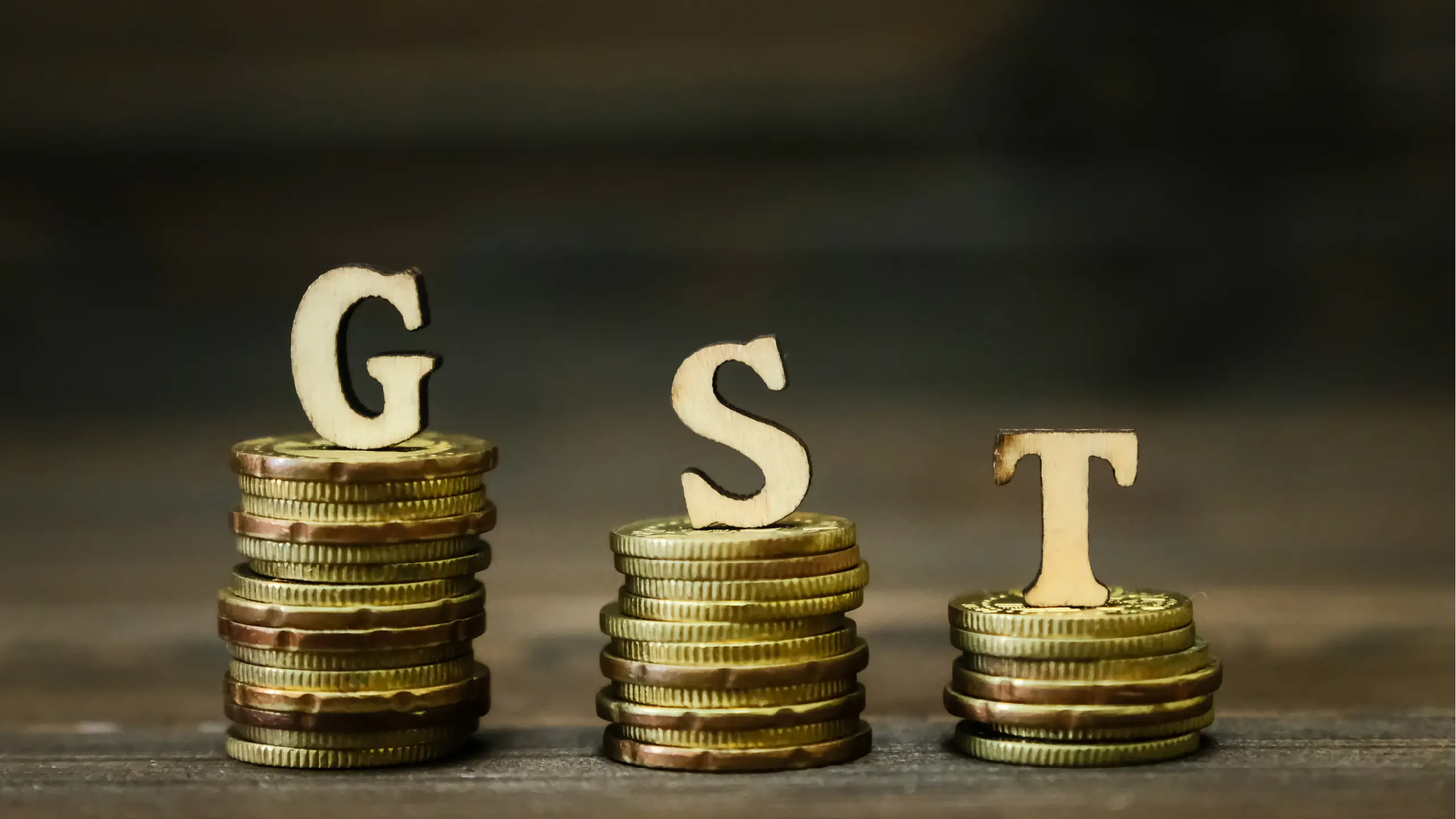
GST Slab Changes 2025: New GST Rates 2025 & Updated GST Rates Explained
If taxes were a Bollywood drama, the GST Slab Changes 2025 just entered with full theatrical flair—plot twists, surprises, and a dramatic reveal. India’s GST Council has waved its wand (okay, fiscal pen) and reshaped tax slabs like a sculptor reworking a statue. The result? A gleaming new structure with just two core GST rates—5% and 18%—plus a spanking-new 40% slab for luxury or sin (yes, that includes carbonated drinks and private jets). This tax makeover, effective from September 2025, is stirring everything from grocery aisles to gadget stores, and Blackwater is here to help you decode the plot with wit and intelligence.
Rewriting the Slabs: Old vs New GST Slab Changes 2025
Gone are the days of juggling four slabs—5%, 12%, 18%, and 28%—plus the extra confusion of special cesses. The new GST rates 2025 now center around a clean two-tier system, designed to simplify compliance and encourage consumption.
Here’s how some of the key GST rate changes stack up:
- Air conditioners, large-screen TVs, dishwashers, and washing machines have moved down from 28% to 18%. That means a typical 1-ton AC with a base price of ₹30,000 could now cost ₹3,000–₹5,000 less, a real festive-season relief.
- Household and personal care items like shampoo, toothpaste, soaps, feeding bottles, combs, bicycles, and kitchenware are now at 5%, down from the earlier 12–18% range. Everyday essentials finally feel, well, essential.
- Education and stationery items such as maps, globes, pencils, and notebooks are now completely tax-free. Once taxed between 5–12%, they’ve been dropped to 0%, easing costs for parents and students.
- Life and health insurance policies are now GST-exempt, compared to the earlier 18% levy. A middle-class family paying ₹20,000 a year in premiums will now save around ₹3,600 annually—small in numbers, big in sentiment.
- Small cars, motorbikes under 350 cc, cement, and auto components are now taxed at 18%, reduced from 28%. The relief will ripple through both industries and consumers, lowering manufacturing costs and EMIs.
- Mobile phones remain at 18%, with no change. Industry players had pushed for a lower slab, but the Council held firm.
- Luxury and sin goods now face a newly created 40% slab, up from the earlier 28% plus cess. Items like tobacco, premium cars, and fizzy drinks will pinch the pocket more than before.
This redesign is less about technicalities and more about psychology. By reducing tax rates on essentials and everyday aspirational products while tightening the screws on indulgences, the government has attempted a neat balancing act. It’s not just a tax overhaul—it’s social engineering through slab rates.
Consumer POV: How Different Income Groups React

Taxes may be universal, but their impact isn’t. The Updated GST rates are playing out very differently across India’s diverse income groups.
Lower-income and rural households are feeling tangible relief. Daily essentials like ghee, paneer, and packaged milk products have dropped into the 0–5% range, putting real savings back into household budgets. For a family in a tier-3 town, every rupee saved on groceries is a rupee freed for education, healthcare, or savings.
Urban middle-class families—especially the salaried class—are embracing the changes with cautious optimism. The exemption on insurance premiums is a huge win for this group, which is increasingly focused on financial planning and security. Meanwhile, cheaper appliances are nudging them to finally consider that washing machine upgrade or flat-screen purchase. This segment is more likely to shift behavior quickly, moving spending plans forward to capitalize on lower GST rates.
High-income groups are barely batting an eyelid at the new 40% slab on luxury goods. Yes, the price of imported champagne or a sports car might be steeper, but if you’re in the market for a ₹2 crore car, a 12% higher tax isn’t a deal-breaker. That said, there is a subtle sentiment shift: luxury buyers don’t like feeling targeted, and repeated “sin taxes” may nudge some spending overseas or into substitutes.
In essence, the New GST rates 2025 are progressive in impact. Relief flows more to the base of the pyramid, strategic savings benefit the middle, and the heaviest burden falls on the top of the pyramid. For policymakers, that’s a political win. For businesses, it’s a signal of where demand will grow—and where it might stagnate.
The Industry Angle: Sectoral Winners and Losers
Retail and FMCG are smiling. Lower GST on personal care items and daily essentials means higher volumes and stronger brand play. With products now cheaper, companies can expand deeper into rural markets and capture incremental demand.
Electronics and white goods are set for a golden quarter. Air conditioners, TVs, and washing machines becoming cheaper is not just a tax change—it’s a consumption trigger. Expect sales spikes around festive seasons, with consumers advancing purchase decisions.
Insurance and financial services just received a long-awaited shot in the arm. The removal of GST on health and life insurance is not only a financial relief but also a nudge to strengthen penetration in a country where insurance adoption is still below global averages.
Automobiles—especially small cars and two-wheelers—are poised for a demand surge as GST rates slide. Cement and auto component industries, too, will enjoy the relief, lowering input costs and spurring housing and manufacturing activity.
On the other hand, luxury and sin goods are the designated losers. Cigarettes, alcohol, fizzy drinks, and premium cars are squarely in the 40% slab, which could dampen demand or push parts of the market underground.
Politics and Policy Behind GST Rate Changes

Every tax tweak carries a political undertone, and GST rate changes are no exception. Reducing taxes on essentials, insurance, and mass-consumption goods signals a pro-middle-class, pro-common-man agenda—critical in a pre-election year. On the flip side, taxing indulgences harder helps position the government as socially responsible, discouraging “bad consumption” while raking in revenue.
For businesses, the message is clear: align with the sectors and goods that government policy favors, and prepare for headwinds in areas it wants to curb. Following the trail of GST Slab Changes 2025 is, therefore, a masterclass in reading India’s policy priorities.
Why Businesses Can’t Ignore Updated GST Rates
If you’re a business leader, the Updated GST rates aren’t just numbers on a spreadsheet—they’re strategic levers. Even a 2% shift can change consumer behavior dramatically.
Take electronics: cheaper ACs and TVs won’t just lift consumer sales; they’ll alter inventory strategies, marketing calendars, and even retail expansion decisions. Or take insurance: with premiums now tax-free, insurers will double down on new customer acquisition, creating a competitive battlefield for market share.
And then there’s consumer psychology. Shoppers today are hyper-informed. They know why prices move and adjust spending accordingly. If your product price goes up due to a GST tweak, loyalty may not be enough—you’ll need promotions, better value offerings, or brand storytelling to cushion the blow.
This is where Blackwater steps in. Our research goes beyond slab shifts, mapping how consumers in different demographics, geographies, and income groups will respond. We don’t just tell you GST on cement is down—we tell you what that means for housing demand in tier-2 cities over the next fiscal quarter. That’s the difference between data and intelligence.
The Blackwater Edge: Turning Taxes into Strategy

At Blackwater, we treat tax changes as signals, not just statistics. Our analysts decode the ripple effects of New GST rates 2025—whether it’s a spike in electronics sales, a dip in luxury consumption, or a structural shift in insurance penetration.
We use layered research—consumer sentiment surveys, retail channel checks, and economic modeling—to build forecasts that businesses can act on. For example, we don’t stop at noting that shampoo is now in the 5% slab. We project whether that makes rural penetration increase by 8% and whether brands should redirect advertising spends accordingly.
Because in a country as dynamic as India, GST is never just a tax—it’s a mirror reflecting where the economy is headed. And with the right intelligence, businesses can align themselves to ride the wave, rather than being crushed by it.
Conclusion: GST Slab Changes 2025 Are More Than Numbers
The Latest GST rates in India are not merely fiscal tweaks; they are strategic signals of how India wants to grow, consume, and prioritize in 2025. Essentials are cheaper, aspirational products more accessible, insurance is friendlier, and luxury comes with a heavier price tag.
For consumers, the new regime delivers both relief and restraint—making life easier on the necessities, while nudging indulgences into “think twice” territory. For businesses, the changes offer opportunities to expand markets, reshape strategies, and anticipate demand shifts.
And for those who see beyond the numbers, the GST Slab Changes 2025 are not just about compliance—they’re about competitive advantage. That’s where Blackwater makes the difference. We don’t just track tax policy. We turn it into actionable strategy, helping businesses move faster, smarter, and sharper in an ever-shifting marketplace.
Because in the game of taxes, knowledge isn’t just power—it’s profitability. And with Blackwater at your side, profitability is never left to chance.

